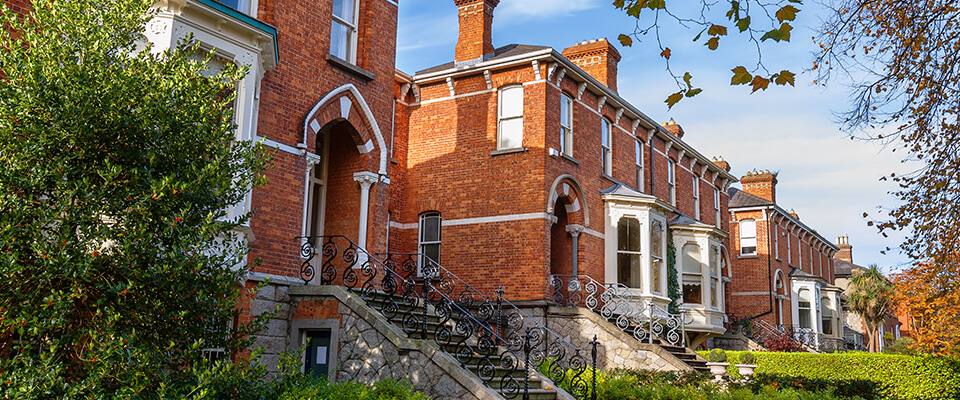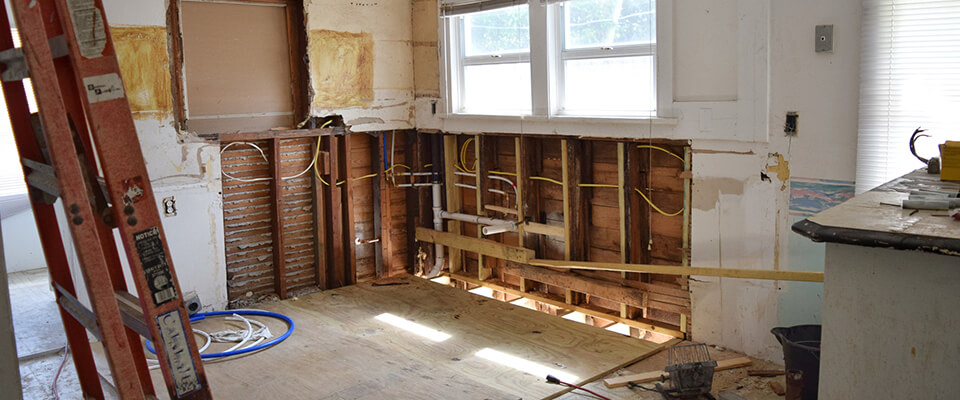It could be your fascination with your home’s high ceilings, an antique shutter or perhaps you’re just curious about what happened before you lived inside your four walls. Whatever the inspiration, many people would like to know the history of their home and there are a number of steps you can take to find out more. We asked an expert in the field for some advice on how to discover the history behind your front door.
1. Research the location of your home
Maps can contain a wealth of information on the topography of a particular location as well as on the landholdings of individual tenants. Your first port of call should be the Ordnance Survey Ireland Geohive where you can search your address and perhaps see your house on the Historic Maps such as the 25-inch map (1888-1913) and Historic 6-inch 1837 – 1842. You can select each map and layer them to see the changes over the years. Best of all, it’s free to use. This can also be a great way to gauge how old your property is.

Another great source of information is the National Inventory of Architectural Heritage (NIAH) maintained by the Department of Arts, Heritage & the Gaeltacht. Its purpose is to conduct Building Surveys of every city and county in Ireland. It is a suggestion of structures to place on the list of Protected Structures for each Local Authority so if you see your home on the inventory it might not necessarily be a Protected Structure. To find a definitive list check out your Local Development Plan for the Record of Protected Structures (RPS). This is available on your Local Authority’s website. If your home is listed there you can see your RPS Number. As a Protected Structure, any planning applications submitted in recent years to your Local Authority’s Planning Department would require a Historic Building Record as part of the planning permission, held on file for your property.
2. Is there a list of all properties registered in a given county?
The Land Register of Ireland is one of the most advanced land registers in Europe. The Register consists of text and maps (title plans). The registered land in each county is divided into folios, one for each ownership or title. Each folio is numbered sequentially within the county division. The folios and maps of the Register constitute a public record and any person may apply to inspect or obtain a copy folio/title plan, on payment of the appropriate fee.

If you know the relevant folio number you can apply for a copy on landdirect.ie or by downloading and completing the Application Form for Copy Folio at a fee of €40 or Application Form for Copy Folio/Title Plan and sending the completed form together with a cheque/postal order for the appropriate fee to:
Customer Service Unit Property Registration Authority Chancery Street Dublin 7
3. If I live in a house that was built decades ago, is it possible to see who else has lived there?
If your house was around at the turn of the 20th century, a great source of information is the Census Records, which are available online for 1901 and 1911. There is also a limited amount of surviving census information from 1821-1951. Form A gives details of occupants like names, ages, religions, etc. This provides a fascinating insight into just who walked the floors before you.
4. What about any changes that have been made to the structure over the decades, can I find out what’s changed?
Again, the 1901 and 1911 censuses contain a wealth of information in this regard. In addition to Form A, the B1 form, the House and Building Return, gives you details of the houses and buildings in a townland/street, including what kind of building. For example, private dwelling, factory, shop etc., and what class of building. The B2 form is the Return of Out-Offices, and Farm-Steadings; this form tells you what extra buildings are attached to a dwelling, for example, stables, coach houses, cow houses, dairies, piggeries, barns etc. You can search the census on www.census.nationalarchives.ie.
And finally, you can’t beat the Local Studies and Archives Section in your local library as a research tool for your home. They usually have every locally published book, pamphlet and thesis on local history and folklore. You might find your home or a past owner included in a local poem or legend which adds colour to the story of your house. Contact your local history groups - they often have a Facebook page these days - or your local chapters of the Irish Georgian Society or An Taisce to tap into a well-established spider’s web of local knowledge.

5. Can you find out who built your house?
The Irish Architectural Archives is a wealth of information. Their premises on 45 Merrion Square in Dublin has a reading room which you can access for free and upon receipt of your reader’s number. You can read more about how to get a reader number here. The Architectural Archives maintains The Dictionary of Irish Architects which contains biographical and bibliographical information on architects, builders and craftsmen born or working in Ireland during the period 1720 to 1940, and information on the buildings on which they worked. You can search this database by building online at www.dia.ie.
6. How far back in history can you go?
This depends on where you live and what records you inherited with the property. Most of us can easily search as far back as the early nineteenth century with resources such as the Land Valuation of Ireland, commonly known as Griffith’s Valuation, which was a comprehensive assessment of the rental value of Irish lands and property carried out between 1848 and 1864. Griffith's Valuation is fully searchable online, free of charge on www.askaboutireland.ie.
For those in the country there’s the Tithe Applotment Books which were compiled between 1823 and 1838 as a survey of land in each civil parish to determine the payment of tithes - a religious tax. Unlike Griffith's Valuation they do not cover cities or towns. The Tithe Applotment Books are available online, free of charge on www.nationalarchives.ie.
The National Library (NLI) holds records such as Estate Papers and Maps. In the eighteenth and nineteenth centuries, the vast majority of the Irish population lived as tenant farmers on estates. The administration of these estates produced large quantities of records such as detailed maps, leases and deeds, rentals and account books, maps and correspondence. You can search their Catalogue and Sources database for records belonging to estates held by the NLI at www.nli.ie.
If you live in Munster or Connacht you can search The Landed Estates Database, which provides a comprehensive and integrated resource guide to landed estates and historic houses as far back as 1700.
7. If you live in a modern development, can you find out what the land was used for before?
As mentioned earlier, it’s probably best to check out what information the Ordnance Survey Ireland Geohive contains. This should provide some insight as to the history of the land and if it’s changed much over time.
Emma Gilleece is an Architectural Historian with a MSc in Urban & Building Conservation. She is a member of the Collections Development Committee for the Irish Architectural Archive, An Taisce Council and committee of DoCoMoMo Ireland.


